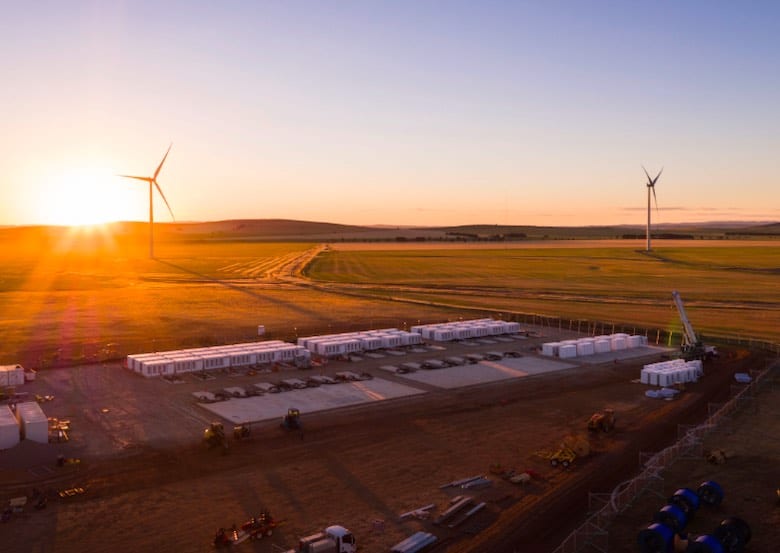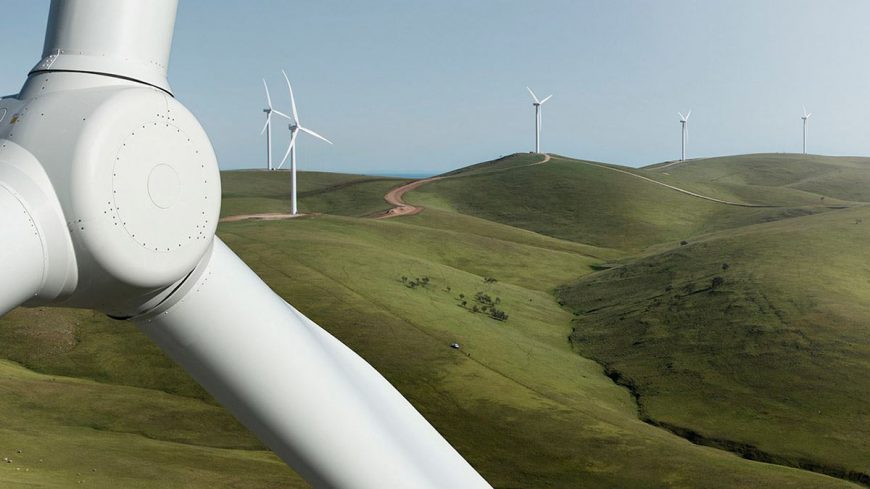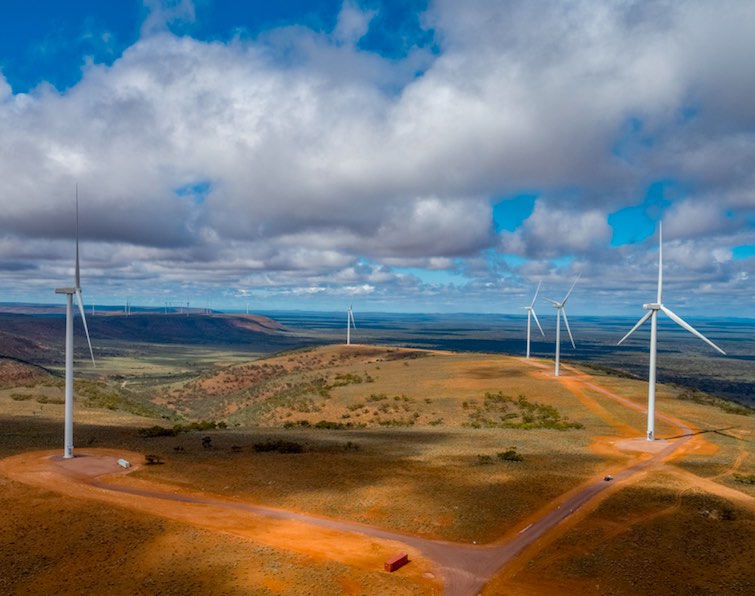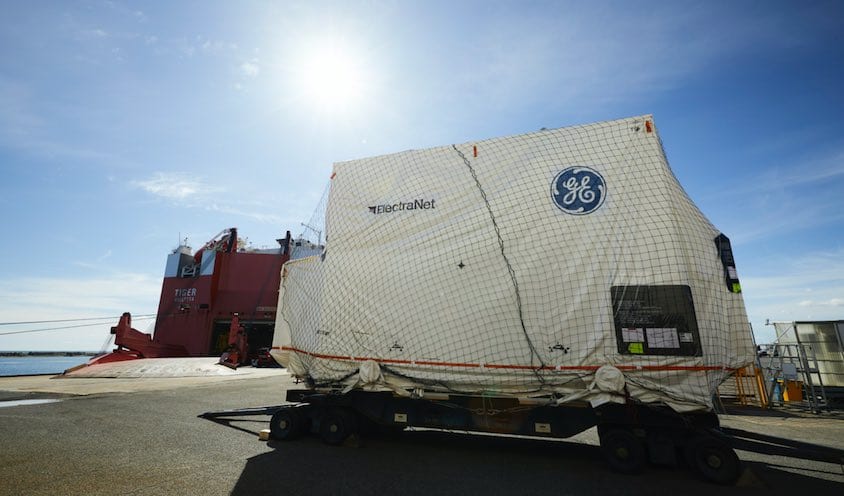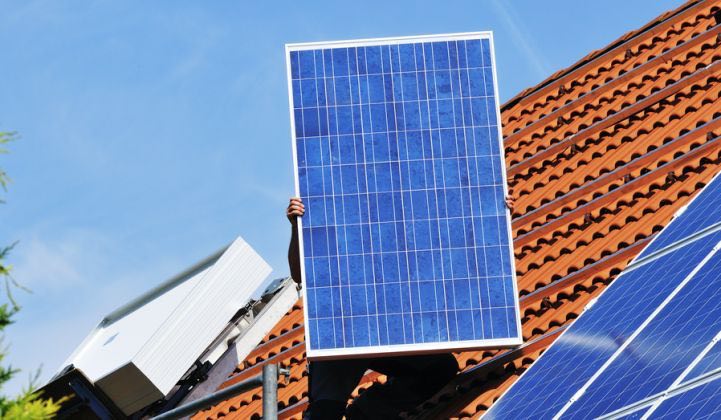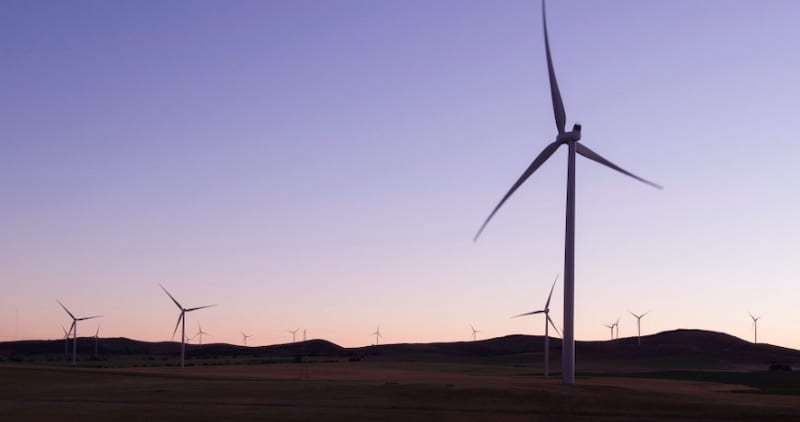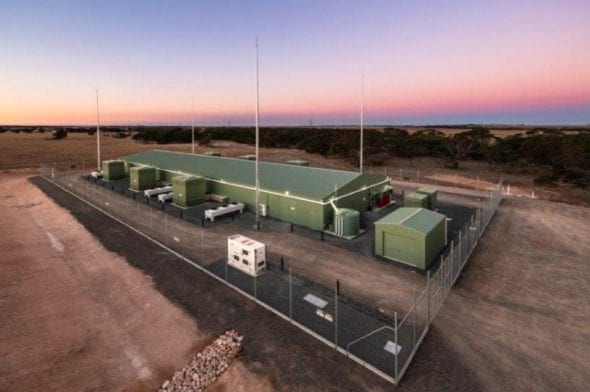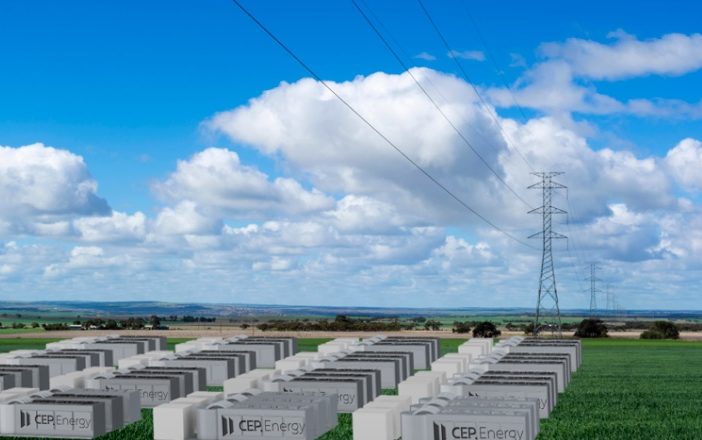From Renew Economy
And Tilt Renewables have paid a huge fine for the inadequate operational settings of their wind farm during the 2016 storm that led to the major blackout.South Australia doubles size of reserve capacity deal with Hornsdale battery
The South Australia government and Neoen have agreed to double the size of the reserve capacity made available by the Tesla big battery at Hornsdale to ensure that the Australian Energy Market Operator has the resources to deal with any unexpected incidents in the grid.
The Hornsdale Power Reserve, as it is officially known, signed a 10-year contract for a total of $40 million with the state government in 2017 to provide reserve capacity of 70MW and 29MWh for AEMO to deploy when needed, such as when the major link to Victoria failed.
That landmark agreement was key to helping Neoen deliver the first big battery on Australia’s main grid and what was – for nearly three years- the biggest lithium-ion battery in the world.
Hornsdale was recently expanded from its original size of 100MW and 129MWh to 150MW and 194MWh, and is due to deliver new services to the grid.
And it seems that AEMO has seized that opportunity to secure extra capacity to deal with the potential shortfalls of inertia in the case of any more failures of the main transmission link, lifting the contracted reserve capacity to 130MW and 32.5MWh.
“On 30 September 2020, Hornsdale Power Reserve (HPR) and the South Australian Government agreed to increase the capacity reservation for HPR to 130MW (and 32.5MWh of energy storage) during any South Australia islanding event,” it says in a new report on system strength and inertia issues,” a new report on system strength and inertia reveals.
It is understood that the agreement is an interim measure while Electranet, the local transmission network, conducts a tender to source more fast frequency response services to address the inertia shortfalls identified by AEMO. Any dollar terms have not been released.
Despite the 10-year contract with the state government, the Hornsdale battery has so far delivered far more revenues in the frequency control and energy arbitrage markets than it has from the state government contract.
The inertia shortfall is likely to exist until a new link to South Australia is built – the $2.4 billion Project EnergyConnect – which is expected to alleviate system strength and inertia concerns. That new link is likely to be delivered by 2024/25, if approved by the energy regulators.
Neoen recently signed a deal with the Victorian state government for an even bigger battery to deliver more grid services to AEMO, this time allowing for the operating capacity of the main transmission link between Victoria and NSW to be expanded.
The contract for 250MW of capacity and 125MWh will attract a payment of $12.5 million a year and will pave the way for an even bigger battery – 300MW and 450MWh of storage to be built near Geelong. That project should be completed next year.
https://reneweconomy.com.au/south-austr ... ery-94726/
Wind farm operator fined $1 million for breaching national energy rules before SA statewide blackout
A South Australian wind farm operator has been fined $1 million for contravening national electricity rules in the three years leading up to the 2016 statewide blackout.
The Australian Energy Regulator (AER) launched legal action against Snowtown Wind Farm Stage 2 (SWF2) last year, after turbines shut down unexpectedly.
The company was accused of supplying electricity to the grid despite not having protection system settings approved by the Australian Energy Market Operator (AEMO).
According to the judgement, SWF2 was a wholly owned subsidiary of Trustpower Limited, a publicly listed New Zealand power company, at the relevant time.
The AER also launched legal action against three other wind farms — Hornsdale, Pacific Hydro's Clement's Gap and AGL's Hallett farms — but the outcomes of those cases have yet to be determined.
The blackout occurred on September 28, 2016, when extreme weather, described at the time as "twin tornadoes", caused major damage to electricity infrastructure, knocking down huge transmission lines.
The AER said a subsequent loss of wind generation then triggered the blackout, which left 850,000 customers without power.
SWF2 accepted the $1 million penalty for failing to adequately protect its wind farm from "abnormal voltage".
Justice Richard White said the contravention was "not deliberate" and the company "took prompt steps to rectify the situation".
The Federal Court today ordered the company — which has 90 wind turbines in SA's mid north — to implement a compliance program and hire an independent "compliance expert" to ensure it abides by the rules in the future.
The expert will then provide a written compliance report to the court after six months.
Justice White said the wind farm had low-voltage protection systems fitted to each of its turbines to protect "against abnormal voltage excursion of the power system" — but they were set at a lower threshold than required by the National Electricity Rules (NER).
"The ability of wind farm turbines to continue operating ('to ride through') periods of voltage fluctuations … is an important requirement for their connection to the power system in the NEM (National Electricity Market)," he wrote in his judgement.
"That feature reduces the ability of voltage disturbances arising from faults and other occurrences to cause cascading failures in the system and thereby enhances the ability of AEMO to maintain 'power system security' and, in particular, to avoid blackouts."
He said the NER "imposes an obligation" on generators of electricity, such as SWF2, to have protective systems in place to deal with episodes of abnormal voltage in the power system.
"The purpose of such systems is to ensure that the generating units remain in continuous operation during specified disturbances and thereby to assist AEMO in maintaining power system security," he said.
"On 28 September 2016, six under-voltage disturbances occurred on the power system within a period of approximately 90 seconds.
"In response to the sixth under-voltage disturbance, the [low-voltage protection system] was activated on 34 of the 37 turbines then in service, with the consequence that they shut down and ceased to supply active power to the power system.
"This was associated with the widespread electricity blackout which occurred in South Australia on that day."
Justice White ordered SWF2 to pay the "Commonwealth of Australia a pecuniary penalty of $1 million in respect of the contravention".
He also ordered SWF2 to pay the AER's court costs of $100,000.
https://www.abc.net.au/news/2020-12-22/ ... t/13007234
